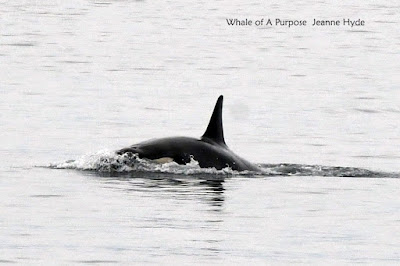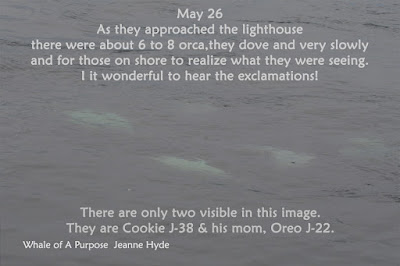The first day of hoisting the Whale Warning Flag this year! With no wind to help display the flag he waved the flag until the boater stopped! Yes! Thank you!
This was just too funny to me, so I had to post this.
And finally - here's an image of new calf, J-59. Notice that peachy coloration of the eye patch.
So wonderful to see J Pod again. They had gone out to sea in mid-April and returned to the waters along the west side of San Juan Island on the 24th. They were spread out near and far & leaders to trailers. Catching up after a week of just about non-stop J Pod. Will post more images after catching up!
How wonderful it is to see them all again and all the under four-year-old kids of J Pod - Tofino J-56, Phoenix J-57, Crescent J-58 and newest calf J-59. J-59 will receive her (yes!! her! The Center for Whale Research confirmed with an image that she is a female! Tofino, Crescent & now J-59 - hope for their future.












































